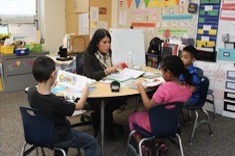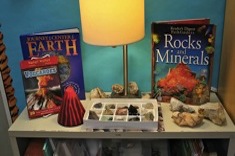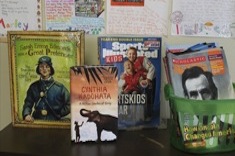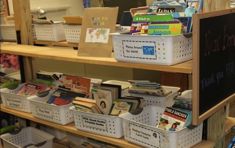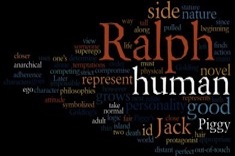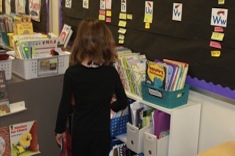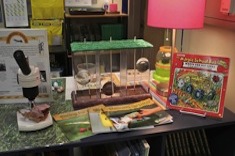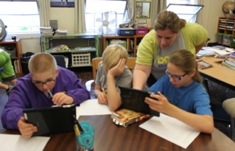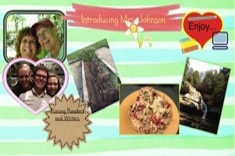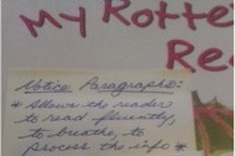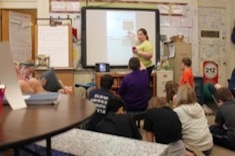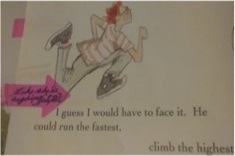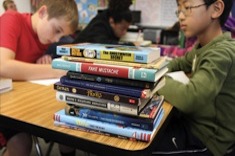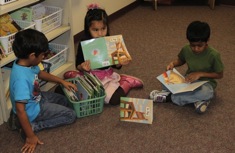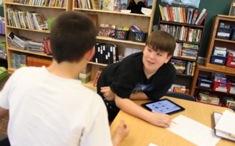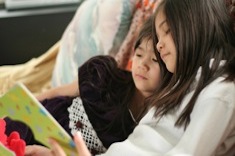Articles
Here is where you’ll find all the latest print features from our contributors. If you’d like to browse specifically by grade level, topic, or contributor, you can use the links in the right sidebar.
Latest Content
Three Questions to Ask When a Guided Reading Group Is Stuck
Jan Burkins and Kim Yaris share three questions teachers should ask themselves when guided reading groups aren’t going well.
Small-Group Writing: Steps for Success
Cathy Mere provides grouping guidelines for primary teachers.
Frog and Toad and Tina and Maya: A Precocious Kindergarten Reading Group
Suzy Kaback ponders the precociousness of two kindergarten readers.
Classroom Displays for Nonfiction Learning
Andrea Smith shares some of her favorite nonfiction classroom displays.
Blurring Genres and Real-Life Readers
The line between fiction and nonfiction can be fuzzy, but Tony Keefer finds what matters most is finding texts that captivate readers.
Exploring Literary Nonfiction with Middle School Students
Holly Mueller and her middle school students have fun exploring the creative aspects of literary nonfiction.
10 Ways to Publish Student Work
Erin Ocon compiles a list of the ways she publishes writing of her teen students.
Letter Writing with High School Students
Kim Campbell instills a love for a lost art in her high school students.
Using Lord of the Flies to Teach Argument
Gretchen Schroeder has suggestions for using short texts and close reading to help students comprehend The Lord of the Flies.
Picture Books or Beginning Readers?
Many beloved characters from picture books are showing up in beginning readers, and in the process can lose a lot of their appeal. Shari Frost provides teachers with criteria for choosing between picture books or beginning readers.
Questions and Picture Books
Katie DiCesare suggests some mentor texts for fostering curiosity in young readers.
Nine Picture Books for Teaching Mindfulness
Kim Yaris and Jan Burkins conclude their series on integrating children’s literature and mindful teaching.
How to Get a Book to Catch Fire
If your goal is to get teens more excited about independent reading, Gretchen Schroeder has suggestions to help.
New Words for the New Year
Jan Burkins and Kim Yaris have a fresh take on goals for the new year.
Explore: Time for Nonfiction
Andrea Smith uses Explore Time with her fourth graders to build interest in nonfiction.
The Power of a Hashtag
Katharine Hale looks at the value of hashtags in helping students harness Twitter in a reading community.
Twitter in the Classroom
Katherine Sokolowski and her students find Twitter is an essential element in their fifth-grade reading workshop.
Choosing the Right Tool for Your Message
Julie Johnson has advice on classroom uses of tech resources.
Classroom Management and Student Responsibility
Katherine Sokolowski is discouraged when she observes that some students are off-task during literacy workshops. She decides a reflection sheet will be a useful weekly scaffold to support independent monitoring of behavior.
Don’t Judge a Book by Its Cover: Teaching Book Choice Strategies to Middle Schoolers
Katie Doherty helps students make choices for independent reading.
Organizing Craft Minilessons
Mary Helen Gensch concludes her series on crafting your own minilessons with tips on organizing and storing your plans.
Integrating Short Videos into Minilessons
Katherine Sokolowski gives advice on how to add video to your literacy minilessons.
How to Notice: Mining Children’s Books for Craft Minilessons
This is the second installment in our new series on creating your own writer’s craft minilessons.
Reading Math: Starting with Visuals
Maria Caplin finds launching her math minilessons with an image helps her students read math problems in deeper ways and notice mathematical components of everyday life.
Shallow Books? Learning from a Reading Celebration
Franki Sibberson discovers we allow students to assess what reading matters most to them, we can learn a remarkable amount.
Reading Workshop in Kindergarten: When and How to Launch
Clare Landrigan and Tammy Mulligan share wise advice about launching workshops in kindergarten.
Letter to Franki Sibberson’s Students
Here is a letter Brenda Power wrote to Franki Sibberson's students about why adults observe children, if you're looking for ways to explain the presence of adult visitors in classrooms.
Grading in Literacy Workshops
Katherine Sokolowski finds grading student work in her fifth-grade classroom becomes far more interesting when students take responsibility for choosing what will be graded.
Learning to Observe: Inviting a Parent to a Tutoring Session
Max Brand brings a mother into the assessment process and teaches her what to observe as her child reads.
Multicultural Series Books
Shari Frost is alarmed when she realizes how rarely children of color are represented as main characters in book series. She decides to compile a list of multicultural series books.
Browse Content By
Type
Category
- Assessment Tools
- Big Fresh Archives
- Booklists
- Choice Numeracy
- Classroom Design
- Common Core
- Community Building
- Conferring
- Content Literacy
- Digital Literacy
- English Language Learners
- Equity
- Family Relations
- Free Samples
- Guiding Groups
- Leadership
- Literacy Coaches
- Mentor Texts
- Minilessons
- New Teacher Mentors
- Podcasts
- Poetry
- Quote Collections
- Reading Strategies
- Self Care
- Struggling and Striving Learners
- Talking and Listening
- Teacher Study Groups
- Teaching Reading
- Teaching Writing
- Word Study and Vocabulary
Author
- Melissa Quimby
- Nawal Qarooni
- Gwen Blumberg
- Julie Cox
- The Lead Learners
- Hannah Tills
- Josie Stewart
- Ruth Metcalfe
- Mallory Messenger
- Becca Burk
- Jodie Bailey
- Vivian Chen
- Mary Brower
- Tiffany Abbott Fuller
- Stephanie Affinito
- Ruth Ayres
- Leigh Anne Eck
- Heather Fisher
- Shari Frost
- Julie Johnson
- Suzy Kaback
- Gigi McAllister
- Shirl McPhillips
- Melanie Meehan
- Cathy Mere
- Debbie Miller
- Tara Barnett and Kate Mills
- Tammy Mulligan
- Dana Murphy
- Bitsy Parks
- David Pittman
- Brenda Power
- Heather Rader
- Matt Renwick
- Mandy Robek
- Christy Rush-Levine
- Gretchen Schroeder
- Jen Schwanke
- Brian Sepe
- Katherine Sokolowski
- Stella Villalba
- Jennifer Vincent
Grade Level
Choice Literacy Membership
Articles
Get full access to all Choice Literacy article content
Videos
Get full access to all Choice Literacy video content
Courses
Access Choice Literacy course curriculum and training

